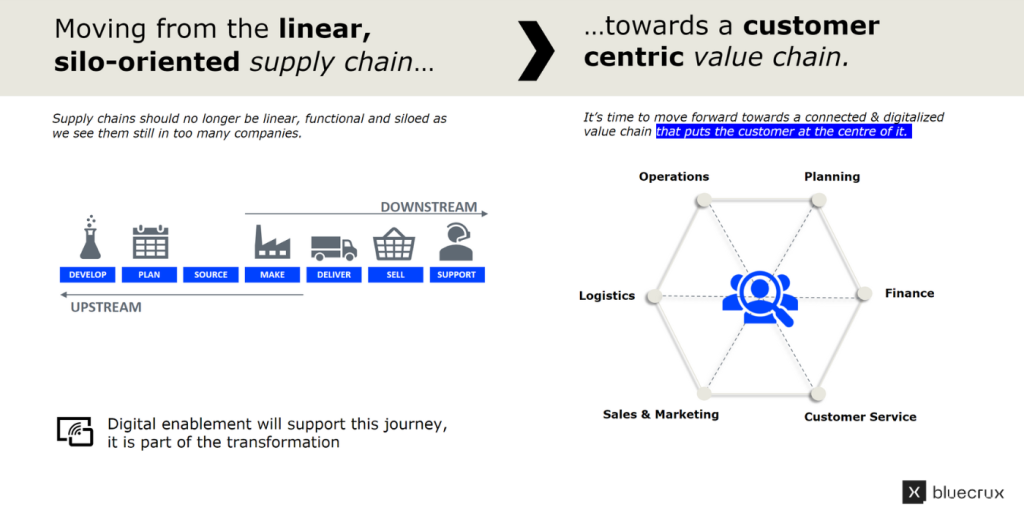There are too many buffalo, we need more cheetahs. No, this is not a call to action to reduce wild buffalo herds, nor to protect the cheetah. Not that we don’t care about the world’s beautiful wildlife; on the contrary. It is merely a throwback to an analogy we made to picture the way we are approaching customer-centricity in general and, more specifically, a customer-centric supply chain.
And as we are looking at the mindset that is needed within a customer-centric supply chain, we realize this is one that is not created overnight. It is a journey. And did you know that in that journey toward a customer-centric supply chain, there are four important aspects that can guide you along the way? Let’s dive into them one by one:
1. Combine insights inside-out vs. outside-in
Stating that you need a clear view of your customer and their needs and expectations is kicking in an open door. We know that and so do you. However, it is important to stress that a supplier-customer transaction nowadays is much more than just an exchange of goods and money. It is a sequence of events and touchpoints that are part of a business relationship that aims to maximize value creation for both parties.
For the customer, this value can be described as the calculation of their needs multiplied by their appreciation or perceived experience. Mapping out that customer journey and getting a clear view of all the different touchpoints is crucial to being able to spot all value-creation opportunities throughout the customer journey. Both from your own perspective (inside-out) and even more so from the customer’s perspective (outside-in).

2. VoC–Listen to, learn from & understand your customer
VoC or Voice of Customer must be considered as a key driver to generate insights and capture customer feedback. Too often you hear the statement: “I know what my customer wants”. And yes, that can be true. But let’s be honest, anyone can. The point is to go to that next level and to understand.
So, embracing VoC methods and tools and gradually embedding them into your process will enable you to listen to, learn from AND understand your customer. Only when you get more mature in tapping into the VoC, you will realize how much more business value it will bring you.
3. Build value-driven segmentation
If value creation is the goal you want to reach, we believe that data is the perfect fuel to run the engine that will get you there. Or more specifically: information. Transforming the available and gathered data into information can be done by analyzing both quantitative and qualitative data and translating this into understandable value typologies.
Value typologies show and summarize the key characteristics of a customer based on their value drivers, CX requirements and expectations. They are built based on both inside-out and outside-in customer insights. Defining these value typologies for your customer base will kick-start your engine to be able to segment them based on their value drivers. Then, you are all set to map out the road toward value-based differentiation.
4. Map out the road toward value-based process differentiation
This brings us to the last—yet not least—key aspect of this journey. Often, traditional segmentation is driven by elements like sector, region, industry, revenue, etc., as they are in place to drive efficiency and/or set the right priorities in operational execution. Enriching this traditional segmentation with customer value segmentation will allow you to focus on what matters most to your customers while at the same time keeping in control of your own efficiency.
Defining ways to differentiate your processes based on the value drivers will enable you to build service offerings that are tailored to hit the “value sweet spot” of every customer value segment. This will allow you to make a difference in the value delivered, increasing the customer experience and using it as a competitive advantage.
So, it is time to focus on what matters most. Start doing the right things and not just doing things right. Get started by thinking big, starting small and scaling fast.
Are you ready to leave for your journey towards a customer centric, connected and digital supply chain? Let’s talk and see where we can support you in this journey!